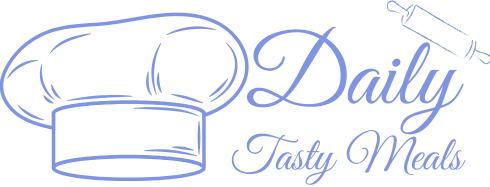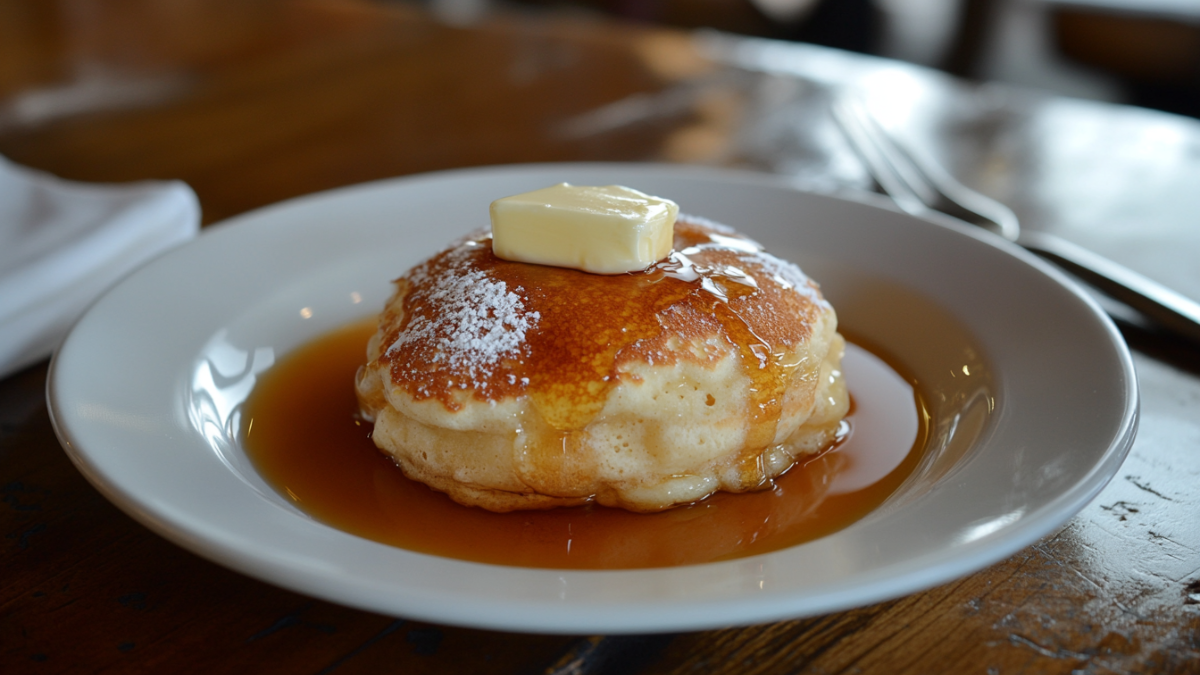The Ultimate Guide to Making Pancakes for One
Table of Contents
Sometimes, you just want a single serving of pancakes without the hassle of making a large batch. Whether it’s a solo breakfast or a quick snack, mastering a pancake recipe for one is the key to satisfying your cravings without waste. For more breakfast ideas, check out our guide on classic chicken pot pie with cream of chicken soup.
Why Pancakes Are a Breakfast Staple
Pancakes have long been a beloved breakfast staple across cultures. Their versatility, simplicity, and delicious flavor make them a go-to choice for many. Originating as a humble dish made with basic ingredients, pancakes have evolved into a global phenomenon with countless variations. Whether fluffy American-style pancakes, delicate French crêpes, or hearty potato pancakes, this dish offers something for everyone.
One of the reasons pancakes are so popular is their ability to be customized. From classic maple syrup to fresh fruit, whipped cream, and savory toppings like smoked salmon, pancakes cater to every palate. Their adaptability also makes them suitable for various dietary preferences, including gluten-free, vegan, and low-carb options.
Additionally, pancakes are easy to prepare. With a simple batter made from pantry staples, they can be whipped up in minutes, making them ideal for busy mornings. Their comforting texture and warm flavors evoke a sense of nostalgia, reminding many of family breakfasts and special weekend brunches.
Pancakes also serve as a canvas for culinary creativity. Adding spices, extracts, or mix-ins like chocolate chips or nuts can transform a simple pancake into a gourmet treat. For those looking to impress, creating layered pancake stacks or experimenting with international recipes can elevate breakfast to an entirely new level.
Why Make Pancake recipe for one?
Single-serving pancakes are ideal for:
- A quick breakfast or snack.
- Those living alone or craving a solitary treat.
- Experimenting with flavors without committing to a large batch.
With this recipe, you’ll enjoy fluffy, delicious pancakes tailored perfectly for one. For inspiration, explore our tips for the ultimate guide to Martha Stewart’s pancake recipe.
Essential Ingredients for the Perfect Pancake recipe for one
To make the best pancakes for one, you’ll need a few basic ingredients:

- Flour: Use all-purpose flour for a standard pancake or experiment with whole wheat or gluten-free options.
- Leavening Agent: Baking powder gives pancakes their characteristic fluffiness.
- Sweetener: Granulated sugar works well, but you can try honey or maple syrup for variation.
- Liquids: Milk is a must—opt for dairy or a plant-based alternative like almond or oat milk.
- Eggs: Provide structure and richness to the batter.
- Butter or Oil: Adds moisture and ensures a golden-brown finish.
- Flavorings: A splash of vanilla extract and a pinch of cinnamon elevate the taste.
The Science Behind Fluffy Pancakes
Achieving the perfect fluffy Pancake recipe for one is an art rooted in science. Several factors contribute to that ideal light and airy texture, and understanding these can help you master your pancake game.
The key to fluffiness lies in the batter’s leavening agents. Baking powder, commonly used in pancake recipes, releases carbon dioxide when mixed with liquid and exposed to heat. This gas creates tiny bubbles in the batter, which expand during cooking, resulting in a fluffy texture. Ensuring your baking powder is fresh is crucial, as its potency diminishes over time.
Another important factor is the ratio of liquid to dry ingredients. A slightly thicker batter traps more air, leading to fluffier pancakes. Overmixing, however, can counteract this effect. When you stir the batter too much, the gluten in the flour develops excessively, making the pancakes dense and chewy. Mixing just until the ingredients are combined ensures the batter retains air pockets for maximum fluffiness.
Temperature control also plays a pivotal role. Cooking pancakes on medium heat allows the batter to rise properly without burning. A preheated pan ensures even cooking, and flipping the pancake at the right time—when bubbles form on the surface—helps maintain its airy structure.
Finally, resting the batter for a few minutes before cooking allows the flour to fully hydrate and the leavening agents to activate. This simple step can significantly enhance the pancake’s texture.
Tools You’ll Need for the Perfect Pancake recipe for one
Ensure you have these tools ready:
- A mixing bowl and whisk.
- Measuring cups and spoons.
- A non-stick skillet or griddle.
- A spatula for flipping.
Step-by-Step Instructions
Here’s how to prepare your single-serving pancake:
- Mix Dry Ingredients
Combine flour, sugar, baking powder, and a pinch of salt in a mixing bowl. - Add Wet Ingredients
Stir in milk, an egg, melted butter, and vanilla extract. Mix until just combined; avoid overmixing. - Heat the Pan
Preheat your skillet over medium heat and grease it lightly with butter or oil. - Cook the Pancake
Pour the batter into the skillet, creating a round pancake. Cook until bubbles form on the surface, then flip and cook the other side until golden brown. - Serve Hot
Plate your pancake and add your favorite toppings!
Common Mistakes to Avoid
- Overmixing the Batter: Leads to tough pancakes.
- Incorrect Pan Temperature: Too hot, and they’ll burn; too cold, and they’ll be undercooked.
- Flipping Too Early: Wait until bubbles appear before flipping.
Variations to Try
Customize your pancake recipe for one with these ideas:
- Fruits: Add blueberries, bananas, or apple slices to the batter.
- Nuts and Seeds: Sprinkle in chopped walnuts or chia seeds.
- Spices: Enhance the flavor with cinnamon or nutmeg.
- Chocolate Chips: For a sweeter treat, fold in chocolate chips.
Regional Variations of Pancakes
A pancake recipe for one can take many delicious forms across the world, each reflecting its region’s unique culinary traditions. Exploring these variations can bring excitement to your breakfast routine while allowing you to discover new flavors.
In the United States, a classic pancake recipe for one is known for its fluffy texture, often enjoyed with butter and maple syrup. Buttermilk pancakes are a popular choice, as the acidity in buttermilk reacts with baking soda to create an ultra-fluffy result. In contrast, French crêpes are thin and delicate, often filled with sweet or savory ingredients like Nutella or cheese.
Swedish pannkakor resemble crêpes but are slightly thicker and traditionally served with lingonberry jam. Moving east, Japanese soufflé pancakes have gained worldwide fame for their tall, airy texture achieved through whipped egg whites.
In Africa, Ethiopian injera—a spongy pancake made from teff flour—is a staple, often paired with stews and other dishes. Meanwhile, India’s dosas and uttapams offer savory alternatives, made from fermented rice and lentil batter.
No matter the style, a pancake recipe for one proves how simple ingredients can be transformed into something extraordinary.
Toppings and Serving Ideas
Elevate your pancake recipe for one with these serving suggestions:
- Toppings: Maple syrup, fresh fruit, or a dollop of whipped cream.
- Sides: Pair with crispy turkey bacon or scrambled eggs.
- Beverages: Enjoy with coffee, tea, or a fresh juice.
Pairing Pancakes with Beverages
A great beverage can enhance your pancake recipe for one, transforming a simple breakfast into a satisfying and enjoyable meal. Whether you prefer sweet or savory pancakes, the right drink complements the flavors and elevates the experience.
For a classic pancake recipe for one with syrup and butter, coffee or tea makes an excellent pairing. A robust black coffee balances the sweetness, while a chai tea latte adds warmth and spice. If your pancakes are topped with fresh fruit, a glass of orange or cranberry juice enhances the natural fruity flavors.
If you opt for a savory pancake recipe for one, such as one with cheese or herbs, pairing it with a strong espresso or a light herbal tea can create a well-balanced meal. A refreshing vegetable juice also adds a unique twist to the experience.
For a nutritious boost, smoothies are a fantastic option. A green smoothie or a berry blend pairs well with a pancake recipe for one, adding both flavor and health benefits to your breakfast..
Healthy Alternatives
If you’re health-conscious, try these swaps:
- Use whole wheat or almond flour.
- Substitute sugar with natural sweeteners like stevia.
- Replace butter with yogurt or applesauce for a lower-fat option.
Making Pancakes Ahead of Time
For busy mornings, making pancakes ahead of time can be a lifesaver. While pancakes are best enjoyed fresh off the griddle, there are several ways to prepare them in advance without compromising quality.
Start by cooking a batch of pancakes as you normally would. Allow them to cool completely before storing to prevent sogginess. Layer the pancakes with parchment paper in an airtight container and refrigerate for up to 3 days.
For longer storage, freezing is an excellent option. Arrange the pancakes on a baking sheet in a single layer, freeze until solid, and then transfer them to a freezer-safe bag. They can last up to 3 months this way.
Reheating pancakes is simple. Use a toaster for a quick fix, as it restores their crisp edges. Alternatively, warm them in a microwave for 20–30 seconds or in an oven at 350°F for about 10 minutes.
FAQs
1. How can I make pancakes fluffier?
Use fresh baking powder and avoid overmixing the batter.
2. Can I make the batter ahead of time?
Yes, store it in the fridge for up to 24 hours, but freshly mixed batter yields better results.
3. What’s a good egg substitute?
Try flaxseed meal mixed with water or unsweetened applesauce.
4. How do I prevent sticking?
Use a well-greased non-stick skillet and heat it to the right temperature.
5. Can I make vegan pancakes for one?
Yes, replace milk with plant-based milk and eggs with a flaxseed mixture.
Conclusion
Making a pancake recipe for one is simple, quick, and endlessly customizable. With the right ingredients and tools, you can whip up a delicious pancake anytime. So, grab your skillet and start experimenting with flavors to create the perfect single-serving pancake!
For more breakfast ideas, try our chocolate chip pancake recipe.

